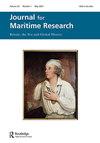Servants to the hospital and the state: nurses in Plymouth and Haslar Naval Hospitals, 1775–1815
Q3 Arts and Humanities
引用次数: 3
Abstract
ABSTRACT Historians have typically viewed the construction of naval hospitals in the mid-eighteenth century as, variously, the British imperial state’s response to a broken system of contract care, a training ground for medical officers, a controlled and regimented space for healing, and a representation of the interests of the state through the quick return of sailors to ships. Yet, contemporaries conceived of the hospitals in household terms. Nurses, washerwomen, and labourers, were ‘servants’ of the hospital and often lived on the premises. Hospital agents kept a ‘household book’, composed of tradesmen’s bills, disbursements, and ward books that detailed issues of coals, beer, and wine to the various wards. Adopting a household model facilitates envisioning the hospitals as dynamic systems that responded to internal and external forces. Pay list prosopography demonstrates how the number of nurses responded to epidemics and battle casualties. This analytical framework illuminates the stability of the core nursing staff further reinforcing the household dynamic.医院和国家的仆人:普利茅斯和哈斯拉海军医院的护士,1775-1815
历史学家通常将18世纪中期海军医院的建设看作是大英帝国对破碎的合同医疗体系的回应,一个医疗官员的训练场,一个受控和有组织的治疗空间,以及通过迅速将水手送回船上来代表国家利益。然而,同时代的人认为医院是家庭的。护士、洗衣妇和工人都是医院的“仆人”,经常住在医院里。医院的代理人有一本“家庭账簿”,包括商人的账单、支出和病房账簿,详细记录了向各个病房发放煤、啤酒和葡萄酒的情况。采用家庭模式有助于将医院设想为响应内部和外部力量的动态系统。薪酬表人面图展示了护士如何应对流行病和战斗伤亡。这一分析框架阐明了核心护理人员的稳定性,进一步加强了家庭动态。
本文章由计算机程序翻译,如有差异,请以英文原文为准。
求助全文
约1分钟内获得全文
求助全文
来源期刊

Journal for Maritime Research
Arts and Humanities-History
自引率
0.00%
发文量
0
期刊介绍:
The Journal for Maritime Research ( JMR ), established by the National Maritime Museum in 1999, focuses on historical enquiry at the intersections of maritime, British and global history. It champions a wide spectrum of innovative research on the maritime past. While the Journal has a particular focus on the British experience, it positions this within broad oceanic and international contexts, encouraging comparative perspectives and interdisciplinary approaches. The journal publishes research essays and reviews around 15-20 new books each year across a broad spectrum of maritime history. All research articles published in this journal undergo rigorous peer review, involving initial editor screening and independent assessment, normally by two anonymous referees.
 求助内容:
求助内容: 应助结果提醒方式:
应助结果提醒方式:


